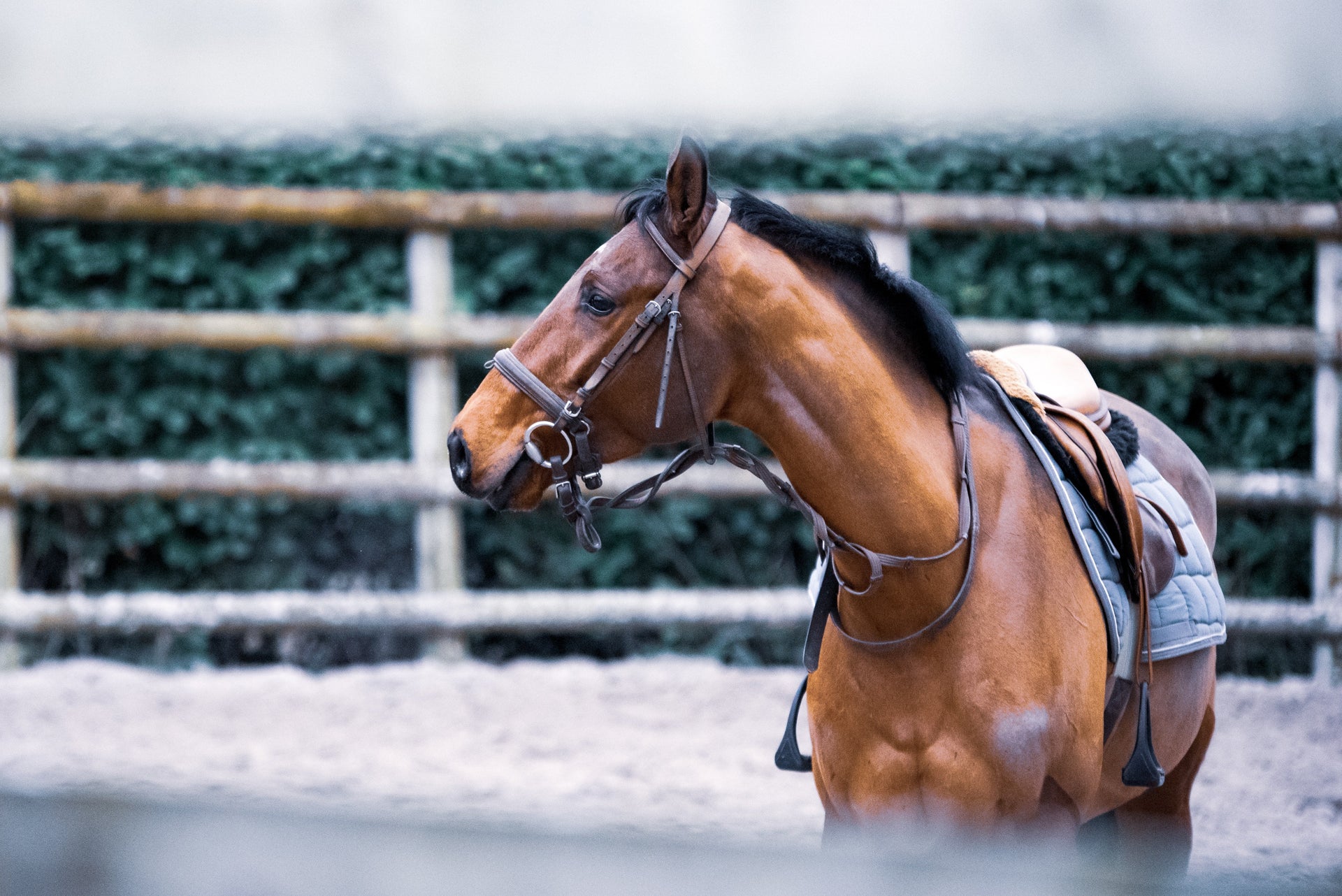Treating laminitis in horses with functional nutrients
March 23, 2021

Published: March 2021 | Updated: April 2023
Spring is just around the corner! The sun is coming out, temperatures are rising and the world is starting to turn green and happy again. The horses are all catching ‘spring fever’ and flaunting their...well we’ll just call it ‘spirit.’ Winter coats are starting to come off in chunks and you’ll have to start guessing who in the field is actually a bay, or just covered in mud, or if you’re really lucky, both!
While spring is usually a happy reprieve for most of us, it can be a trepidatious time for those taking care of horses. The baby spring grass that’s soaking up all of the sun and rain and growing in abundance is high in fructans, which when overindulged upon, can bring along bouts of laminitis in horses.
Laminitis, in most simple terms, means inflammation of the laminae. Laminae are finger-like protrusions that form a vascular network within the horse’s hoof.
There are two types of laminae: Sensitive (dermal) and insensitive (epidermal). When bonded together these two layers adhere the hoof wall to the hoof and suspend the digital phalanx (i.e. the coffin bone, pedal bone, third phalanx, or P3) within the hoof wall.
Although there are many structural differences between us, the way our fingers (sensitive, dermal) stick to our fingernails (insensitive, epidermal) is similar to the way a horse’s laminae work together.
Causes of Laminitis in Horses
Laminitis has phases of progression ranging from developmental, acute, subacute and chronic. Chronic laminitis is referred to as founder, whereas laminitis is considered to be more of an acute condition.
Inflammation of the lamina can occur in response to many things, but the exact mechanisms of action that occur are still an area of ongoing research.
There are different categories of events or conditions that have been previously shown to cause laminitis, including:
- Inflammatory conditions, or the effects that occur in response to excessive carbohydrate ingestion.
- Overindulgence of grain concentrates or grasses that are young, actively photosynthetic, freshly clipped or experiencing environmental distress.
- Metabolic or endocrine conditions, including obesity, insulin resistance, Equine Metabolic Syndrome and Cushing's Disease, to name a few.
- Mechanical overload from excessive concussion or supporting limb laminitis.
- Genetics (some horse breeds appear to be more predisposed to laminitis than others).
Is Reversing Laminitis in Horses Possible?
Laminitis is painful for horses and can have detrimental, long-lasting effects and, in extreme cases, may even require humane euthanasia. Horses can develop laminitis in one hoof, or multiple at a time, however front hooves are most commonly afflicted.
For frame of reference, horses exert around 58% of their weight on their forelimbs and 42% on their hind limbs. So for an average 1,000 lb. horse, each front limb bears about 290 lbs, and each hind limb bears about 210 lbs.

Disturbances in lamina function can lead to a separation of the hoof wall, which bears the most weight in the horse’s hoof. Bearing that much weight on a hoof with a compromised laminar system is excruciatingly painful.
When the other limbs chip in to help take weight off the afflicted hoof, they are made to bear more weight than normal (almost 100 lbs. more each!). That’s how supporting limb laminitis can occur and spiral down into a severe condition.
The combination of the horse’s weight and locomotive forces can result in structural collapse of the hoof, such as rotation or sinking of the distal phalanx. This can result in life-altering severe lameness and, in extreme advanced cases, warrant a humane euthanasia.
For these reasons, catching early symptoms of laminitis in horses is vital. In the event that you notice any of these symptoms it is important to consult a veterinarian and begin treatment as soon as possible.
Signs of Laminitis in Horses
Clinical signs of laminitis to always keep a discerning eye out for include:
- Depression
- Fever/pyrexia
- Hypovolemia
- Profuse, watery diarrhea
- Elevated heat in the hoof/hooves and/or coronary bands
- Increased digital pulses
- Toe pain in response to pressure from hoof testers
- Lameness (and advanced lameness)
- Noticeable changes in weight shifting
- A ‘sawhorse’ stance
- Colic
Probiotics For Horses With Laminitis
It is imperative to communicate with both your veterinarian and your farrier when treating a horse for laminitis. Discerning why laminitis has occurred and how far it has progressed will help to guide treatment protocols.
Initially it is critical to restrict grain and pasture, feeding only quality grass hay until advised otherwise by your veterinarian. In incidences of overeating or gorging, sometimes it may be beneficial to deliver mineral oil via a nasogastric tube to help evacuate the horse’s digestive tract.
Depending on the circumstances, providing additional veterinary support may be necessary, such as intravenous fluids, administration of medicines that address pain, infections or ingested toxins. Horses should be encouraged to lie down and stabled on soft, bedded ground.
Soaking afflicted hooves in cold water or an ice bath is another common practice used to help reduce inflammation.
All of this being said, correct equine management is the #1 method for avoiding laminitis.
This includes:
- Maintaining a consistent diet that provides adequate nutrition with high-quality fiber sources and limited non-structural carbohydrate composition.
- Routine hoof care.
- Proper pasture allotment and management (avoiding access to lush pasture particularly in the late morning and late afternoon hours when grass fructans are highest).
- Health care and immune system support (following a deworming and vaccination schedule).
Perhaps the “new” treatment for laminitis in horses is supplementing with functional nutrients that support the immune system and gastrointestinal tract. For example, supplements with hops and essential fatty acids have been suggested to aid in maintaining inflammatory processes and supplements that promote hoof growth may be a good addition as well.
Most importantly, protecting your horse’s GI tract with specialized bacteria and yeast can not only support the immune response, but also help protect the gut from sudden changes in diet which are sometimes unavoidable in the springtime. Take the necessary precautions today with FullBucket’s veterinarian-formulated Equine Probiotic Pellets.
Read More:
Biomechanics of the Exercising Horse
Sagittal Plane Ground Reaction Forces, Center of Pressure and Center of Mass in Trotting Horses
Inhibition of Fructan-Fermenting Equine Faecal Bacteria by Hops
Effects of Microalgae Supplementation in Horses with Equine Metabolic Syndrome

